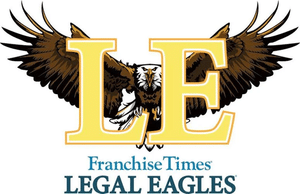You might assume that franchising in the United States is a relatively new thing. Actually, it’s pretty mature, though there is some debate about who the first franchisor was.
Sewing, Hair, and Books. Oh My!
Here’s where records get murky: there are at least three possible first franchises in the US. Let’s work backwards.
Martha Matilda Harper, an entrepreneur who ran a salon business, franchised her first salon in 1891. She then developed franchise systems that you would recognize today. She provided franchisees with training, branded products, and training, and grew the system to over 500 salons and training schools.
But slightly before that, Albert Singer, who had had difficulty marketing sewing machines, found success in franchising as a way to sell his machines in the 1860s. He is credited as having been the first to develop a franchise contract.
But even further back, we have a familiar name: Benjamin Franklin. In addition to inventing many common items like bifocal glasses and the odometer, he also created what was the first documented franchise, though it was called a “co-partnership,” in 1731 in Philadelphia. (Okay, technically we weren’t the United States of America yet, but it still counts!)
He entered into that arrangement with Thomas Whitmarsh to print many of Franklin’s writings, including the Poor Richard’s Almanac, and Whitmarsh was required to buy his printing materials from Franklin.
Fast Forward to Fast Food
Franchising grew more fashionable in the mid-1900s in the US when a new type of franchise popped up in the form of retail and fast food chains. Both the Baby Boom and families’ move to the suburbs at the time created the need for fast food and retail chains to develop in more remote areas outside of cities, thus creating the need for franchising these types of businesses.
In 1919, Roy Allen opened his first root beer stand in Lodi, California, and just two years later, began franchising as A&W Root Beer.
By the 1960s, the franchising industry was booming. Everything from auto supplies to hotels, convenience stores, and plumbing, was being franchised. But this explosion also created problems, and franchising gained a bad reputation. Many franchises sprouted up that were less than scrupulous and were under-funded. Many of these franchise systems went into bankruptcy, leaving their franchisees with large investments and no business to show for that investment. As a result of these practices, investing in a franchise was considered a speculative investment.
More Regulations Means Better Balance for Franchisors and Franchisees
The good that came out of the problems in the 1960s and ‘70s is that franchise regulations really became established. Modern franchise laws developed and the regulations governing franchising, both federal and state, were promoted. Franchising became a highly regulated area of law requiring franchisors to provide a disclosure document (originally the Uniform Offering Circular and now the Franchise Disclosure Document) to prospective franchisees.
Today, these regulations are upheld, and franchisees have recourse if they feel a franchisor isn’t living up to its end of the bargain. We’ve come a long way!







